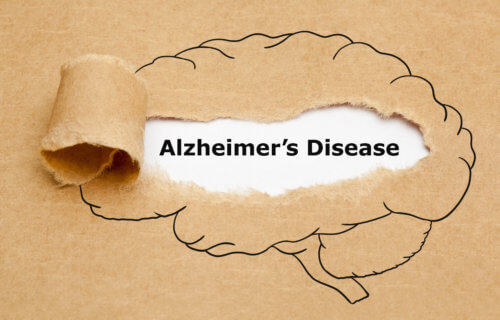RIVERSIDE, Calif. — Alzheimer’s disease is the most common form of dementia and diagnoses continue to rise year over year. Now, promising new research may have finally uncovered the real catalyst of this devastating condition. Most scientists agree that Alzheimer’s develops due to the abnormal buildup of amyloid plaque in the brain. However, according to researchers from the University of California-Riverside, it isn’t just the presence of that plaque that causes Alzheimer’s, but the cells’ slowing ability to clean themselves.
In addition to dementia symptoms, doctors only diagnose Alzheimer’s if they take note of two distinct brain developments: the presence of both amyloid plaques and neurofibrillary tangles. The plaques are a buildup of amyloid peptides, while the tangles are almost entirely made up of a protein known as tau.
“Roughly 20% of people have the plaques, but no signs of dementia,” says UCR Chemistry Professor Ryan Julian in a university release. “This makes it seem as though the plaques themselves are not the cause.”
The research team intensively investigated the tau protein, in hopes of better understanding the relationship between the plaques and tangles. That process led to the discovery of a “key but difficult-to-detect difference in the form of tau” that may explain why some people with tau protein buildup develop Alzheimer’s symptoms while others do not.
Isomers may hold to the key to Alzheimer’s
Much of this work is centered on the different forms that a single molecule can take, referred to as isomers.
“An isomer is the same molecule with a different three-dimensional orientation than the original,” Prof. Julian explains. “A common example would be hands. Hands are isomers of each other, mirror images but not exact copies. Isomers can actually have a handedness.”
The amino acids making up a protein can either be right-handed or left-handed isomers. In the majority of cases, proteins found in living beings consist of all left-handed amino acids.
So, study authors scanned all of the proteins within a sample of donated brain samples. Samples that showed tau buildup but no dementia symptoms exhibited “normal” tau. Conversely, samples collected from people with both brain buildup and relevant symptoms showed a different-handed form of tau.
The majority of proteins found in the human body have a half-life of 48 hours. However, if a protein lingers around long enough, certain amino acids are known to change into the other-handed isomer.
“If you try to put a right-handed glove on your left hand, it doesn’t work too well. It’s a similar problem in biology; molecules don’t work the way they’re supposed to after a while because a left-handed glove can actually convert into a right-handed glove that doesn’t fit,” Prof. Julian adds.
Can you boost cell clean-up ability?
The bodily process of doing away with used up or defective proteins from cells is called autophagy. Scientists have found that autophagy tends to naturally slow down with old age, but Prof. Julian’s team is planning on researching this matter more thoroughly.
All in all, this work makes a compelling argument that insufficient autophagy processes may be to blame for Alzheimer’s. If confirmed, that would mean strategies that promote stronger autophagy would also help prevent dementia. Both fasting and exercise appear to help boost autophagy.
“If a slowdown in autophagy is the underlying cause, things that increase it should have the beneficial, opposite effect,” Prof. Julian concludes.
The study is published in the Journal of Proteome Research.
